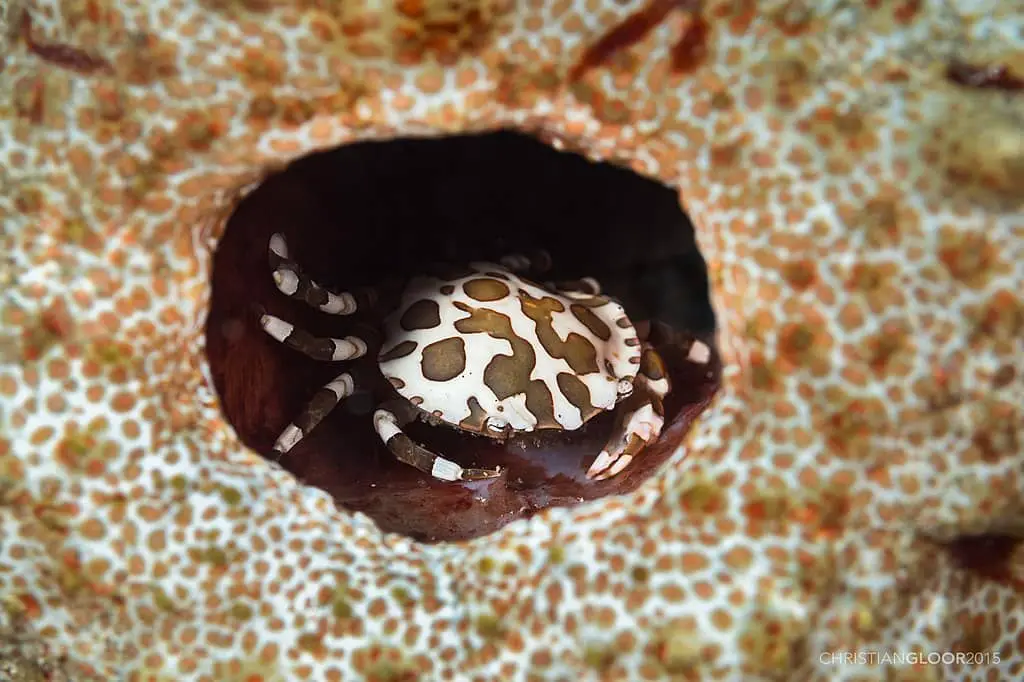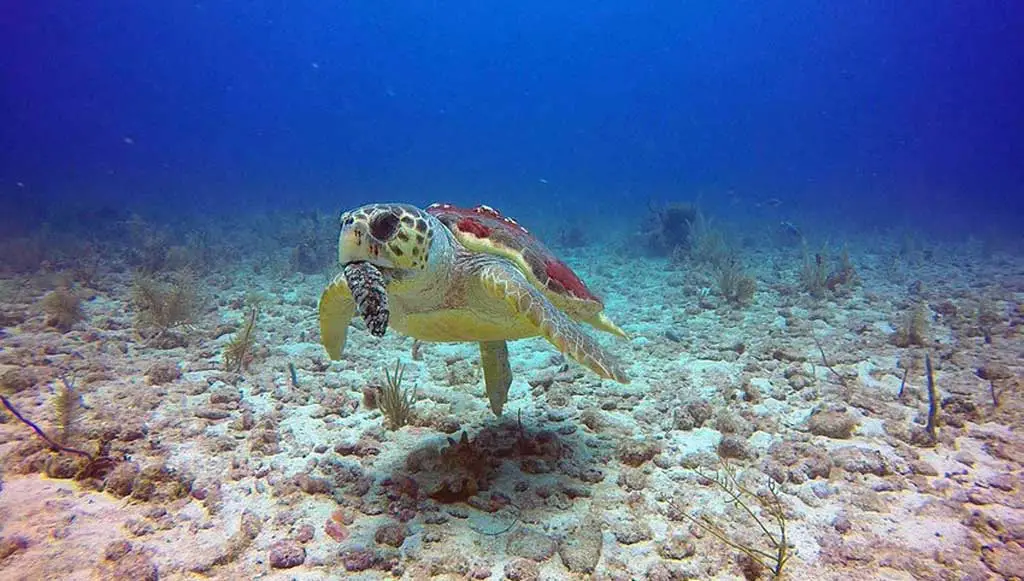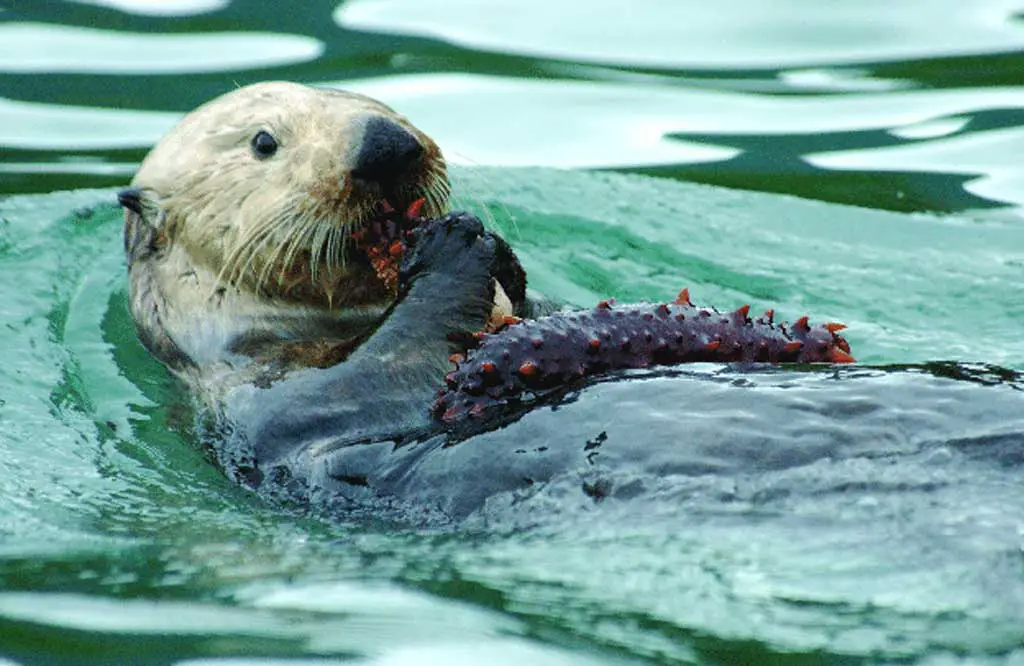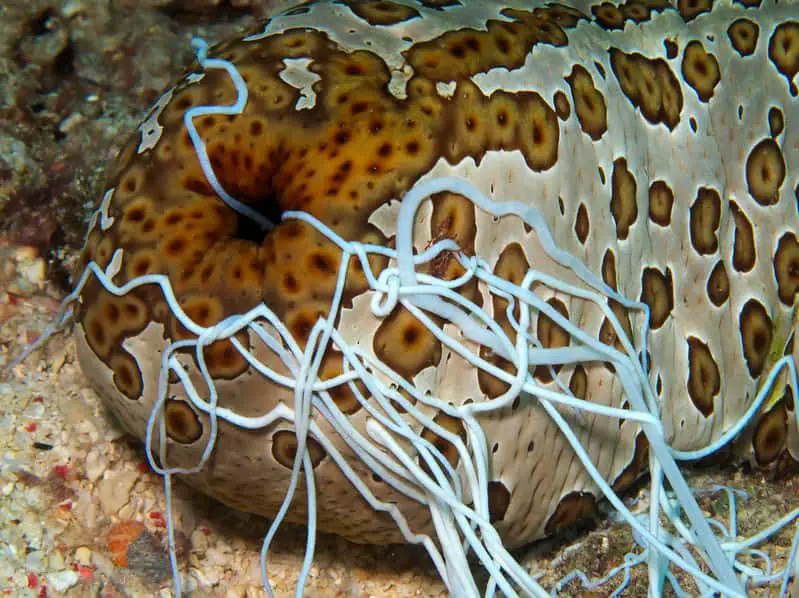Top 10 Predators Of Sea Cucumbers
Sea cucumbers are animals that don’t look tasty to many marine animals, so even though they’re pretty easy to catch, they don’t have a lot of predators. However, there are a few creatures that hunt them. If you wonder what animals eat sea cucumber, in this blog post, we’ll talk all about this. Let’s begin with a quick answer:
Top predators of sea cucumbers include sea stars, Partridge Tun snail, crabs, lobsters, some fish species, turtles, sharks, sea otters, seagulls, seals, walrus, and humans.
However, that certainly doesn’t tell the whole story. Below I’ll explain more about sea cucumbers’ predators and how they can defend themselves to avoid being eaten. Read on!
Predators of sea cucumbers
Sea stars
What may be a surprise for many people – sea stars are predators. They are also very closely related to sea cucumbers by belonging to the same phylum (phylum Echinodermata). Sea stars mostly eat mollusks such as clams, oysters, and scallops, but some will eat sea cucumbers as well.
One of the species that eat sea cucumbers in the northeast Pacific is the sunflower starfish. It’s one of the largest and heaviest starfish in the world that can grow to about 3.3 ft (1 m) in diameter and have more than 20 arms! Unfortunately, its population has declined since the rapidly spreading sea stars’ wasting disease.
Starfish eat sea cucumbers by extending their stomach out of their bodies and digesting food directly. After the dinner is finished, it pulls its stomach back in. All starfish eat this way, and you can read more about it in my other blog post here.
Snails
In the south pacific, the giant Partridge Tun snail specializes in eating sea cucumbers, using a powerful venom to subdue a victim. Once they apply the toxin, they suck the food in with their large proboscis. Maybe you wouldn’t expect it from a snail, but they can swallow the whole sea cucumber, just like a Python (see the video below).
Other places this snail can be found attacking sea cucumbers are the east and south coast of Africa, New Zealand, and Australia.
Crabs
Some crabs will eat sea cucumbers using their claws to pick up the food and put it in their mouths. However, small crabs are also one of the animals that would live inside cucumbers butts. Yes, you’ve heard it right. Since sea cucumbers don’t have that many predators, some animals hide from predators inside their anus.

A relationship like this between animals is called symbiosis, and both animals often benefit from their interactions. However, in this case, sea cucumber doesn’t seem to have any benefits. Some species even developed teeth inside the anus to keep away unwanted visitors.
Lobsters
One of the lobsters’ favorite food are echinoderms such as sea urchins, sea stars, and sea cucumbers. Similarly to crabs, lobsters use their claws to grab prey and put them in their mouth. Lobsters live in all oceans and have adapted to many different conditions, so they live together with sea cucumbers quite often.
Fish
Many fish species such as tuna, cod, sunfish, spiny dogfish, and white seabream can eat sea cucumbers. Most of the time, however, fish can only eat part of their bodies and reject the rest because of the presence of toxins, spicules, and their hard skin.
Some sea cucumbers burrow themselves in the sand, leaving only tentacles out to catch food. These burrowing species may suffer only from tentacles nipping because fishes have no access to the rest of their body.
Turtles
There are seven sea turtle species, each of which has a slightly different diet. Some are omnivores, eating various plants and slow-moving animals, and others mostly eat sponges and jellyfish. Sometimes they eat sea cucumbers, especially loggerhead turtles with massive heads and strong jaws.

Sharks
Sharks are probably the most feared predators in the ocean. They’re large, fast swimmers, and have incredibly strong jaws with sharp teeth. There are more than 500 species of sharks and most of them are opportunistic feeders, meaning they eat a wide variety of prey, very often whatever is available.
Most of the time sea cucumbers wouldn’t be their first choice but depending on species and conditions, sometimes sharks feed on them.
Sea otters
Sea otters are marine mammals native to the northern and eastern North Pacific Ocean coasts. You can see them eating very often because their high metabolism requires them to consume at least 20% of their daily body weight. Their favorite food is invertebrates such as sea urchins, crustaceans, snails, and sea cucumbers.

Normally in order to eat, sea otters dive to collect food and return to the surface. Next, they float on their backs and eat in this position. If they caught shelled prey, they put rocks on their stomach as a table and smash the shell against it to get the soft parts.
Seagulls
Seagulls have unhinging jaws that allow them to consume large prey and swallow them whole. They prey on either dead or alive animals that live in the coastal waters such as crustaceans, mollusks, fish, and small birds.
Seals
Seals are carnivores and besides sea cucumbers, they eat fish, crustaceans, and other invertebrates. They’re great swimmers can some can dive as deep as 600 m (1970 ft) feet to look for prey on the ocean bottom. Next, they swallow it whole or tear it into chunks.
Walrus
Walruses live in Arctic and sub-Arctic regions near the North Pole. They mostly prey on mollusks such as clams but they also eat many other invertebrates including worms, gastropods, cephalopods, crustaceans, sea cucumbers, and other soft-bodied animals.
Humans
Humans, unfortunately, are the top predators of many marine animals, including sea cucumbers. Even though they don’t look like a delicious snack, they’re nutrient factories, rich in protein and other complex organic compounds.
These soft-bodied creatures became especially popular in China, where they’re believed to be imbued with healing properties, treating ailments from arthritis to impotence. Nowadays, there are many regulations about catching and selling sea cucumbers since their population is being overfished worldwide.
Due to their eating habits, sea cucumbers play a significant role in the seabed’s biological processing. They filter sediments and recycle nutrients back into the environment. After they break down the organic matter, the nutrients are available for smaller animals called primary producers. If sea cucumbers disappear, the whole sea ecosystem and food chain will turn barren.
How do sea cucumbers defend themselves?
Sea cucumbers are slow animals and seem very vulnerable, but they developed many different defense mechanisms to avoid being eaten by predators. One of them is their thick, leathery skin which provides excellent protection.
Another way to avoid beating eaten is by expelling their organs out. When sea cucumbers feel threatened, they eject their internal sticky organs through their anus. While the predators get distracted, the sea cucumber swims or walks away. It can regrow its organs within a few weeks. Some sea cucumber species can also expel toxins that can scare or kill predators.

Klaus Stiefel by Flickr
Sea cucumbers are also good in camouflage and passing through narrow passages by liquefying their bodies. The special collagen fibers in the tissues make converting solid tissue into a fluid possible. By “liquefying,” sea cucumbers can squeeze through a small crack, and return to their original state. This way they can escape predators.
Sources:
- Mercier, Annie & Caal, Willie & Hamel, J.-F & Perez-Rogers, Arlenie. (2020). Loggerhead sea turtle Caretta caretta found preying on a sea cucumber on a reef in Belize, ResarchGate
- Francour, Patrice. (1997). Predation on Holothurians: A Literature Review. Invertebrate Biology. 116. 52-60. 10.2307/3226924.
You may also like:

Welcome to Bubbly Diver!
I’m glad to see you here. This blog is created for all marine creature lovers by a bubbly diver - me, Dori :)


